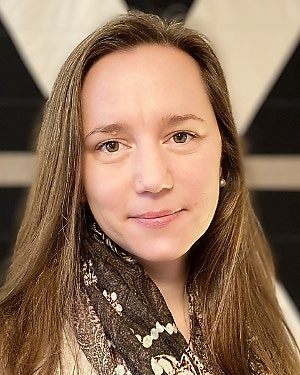Research Summary
In the Goley laboratory, we take an interdisciplinary approach to study the fundamental mechanisms by which bacteria grow, divide, and adapt to changing growth conditions. We use the dimorphic α-proteobacterium Caulobacter crescentus as one model for these studies, as its curved-rod morphology and well-characterized cell and developmental cycle make it particularly well-suited to address questions of morphogenesis and growth control. We recently initiated studies into a second α-proteobacterium - the obligate intracellular, tick-borne human pathogen Rickettsia parkeri - to investigate the cell biology of the enigmatic Rickettsiales. With their distinct lifestyles and physiology, Caulobacter and Rickettsia present complementary models to understand the diversity of growth and adaptation mechanisms among the α-proteobacteria.
We use a multi-pronged approach combining genetics, genomics, imaging, biochemistry, and in vitro reconstitution to understand the cell biology and adaptation mechanisms of these organisms. We are highly collaborative and love to work with specialists in advanced imaging techniques, new analytical approaches and tools, structural biology, and complementary model organisms. Our fundamental research into essential aspects of bacterial physiology will inform antibiotic development and resistance mechanisms, as well as synthetic cell biology efforts. Currently, we are investigating molecular mechanisms by which bacterial growth is regulated at both a global (e.g. during stress) and a local (e.g. at the division site during cytokinesis) level.
Lab
The Goley Lab is focused on understanding how bacteria grow, divide, and respond to antibiotics and others stresses in their environment. Researchers in the lab use cell biological, biochemical, genetic and structural approaches to dissect cell biological processes in bacteria with the aim of understanding how they work in molecular detail. A detailed understanding of the fundamental mechanisms of bacterial growth is required to confront the growing crisis in antibacterial resistance.
Lab Website: Goley Lab
Selected Publications
View all on PubMed
Mahone CR, Payne IP, Lyu Z, McCausland JW, Barrows JM, Xiao J, Yang X, Goley ED. Integration of cell wall synthesis activation and chromosome segregation during cell division in Caulobacter. J Cell Biol. 223:e202211026. (2024)
Figueroa-Cuilan WM, Irazoki O, Feeley M, Smith E, Nguyen T, Cava F, Goley ED. Quantitative analysis of morphogenesis and growth dynamics in an obligate intracellular bacterium. MBoC. 34(7):ar69. (2023)
Daitch AK, Orsburn BC, Chen Z, Alvarez L, Eberhard CD, Sundararajan K, Zeinert R, Kreitler DF, Jakoncic J, Chien P, Cava F, Gabelli SB, Goley ED. EstG is a novel esterase required for cell envelope integrity in Caulobacter. Current Biology. 33:228-240. (2023)
Woldemeskel SA, Daitch AK, Alvarez L, Gaël Panis, Zeinert R, Gonzalez D, Smith E, Collier J, Chien P, Cava F, Viollier PH, Goley ED. The conserved transcriptional regulator CdnL is required for metabolic homeostasis and morphogenesis in Caulobacter. PLoS Genetics. 2020. 16:e1008591
Sundararajan K, Miguel A, Desmarais SM, Meier EL, Huang KC, and Goley ED. The bacterial tubulin FtsZ requires its intrinsically disordered linker to direct robust cell wall construction. Nat Commun. 6:7281. (2015)



Patient Ratings & Comments
The Patient Rating score is an average of all responses to physician related questions on the national CG-CAHPS Medical Practice patient experience survey through Press Ganey. Responses are measured on a scale of 1 to 5, with 5 being the best score. Comments are also gathered from our CG-CAHPS Medical Practice Survey through Press Ganey and displayed in their entirety. Patients are de-identified for confidentiality and patient privacy.